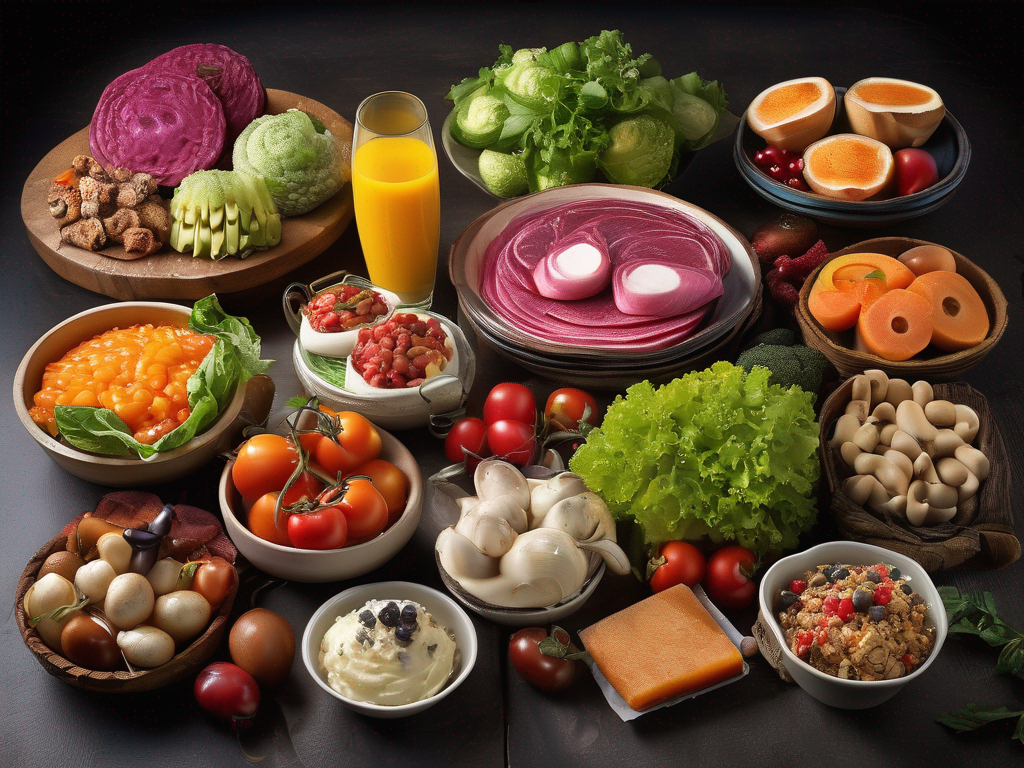
The Ultimate Guide to Food that Doesn't Go Bad
Get Your Free Food Safety Cheat Sheet
30 most common foods with instant answers. Print it and stick it on your fridge—completely free!
The Ultimate Guide to Food that Doesn't Go Bad
In a world where food waste is a growing concern, knowing which foods have an incredibly long shelf life can help you save money and reduce your environmental impact. Whether you're stocking up for emergencies or looking to minimize trips to the grocery store, it's essential to be aware of the foods that can last a long time without spoiling. In this comprehensive guide, we'll explore the fascinating world of non-perishable foods that defy the odds and stay fresh for an extended period.
Understanding Non-Perishable Foods
Non-perishable foods are items that have a long shelf life due to their low moisture content or special preservation methods. They can be stored for months or even years without spoiling, making them ideal for emergency preparedness or long-term food storage. Here are some common types of non-perishable foods:
Canned Goods
- Canned fruits and vegetables
- Canned soups and stews
- Canned meats, such as tuna or chicken
Dried Foods
- Dried beans and legumes
- Dried fruits and vegetables
- Dried pasta and grains
Shelf-Stable Items
- Rice and other grains
- Nut butters
- Honey
Foods with Long Shelf Life
Now that we've covered the basics of non-perishable foods, let's dive into specific items that have an impressively long shelf life:
Honey
Honey is a natural sweetener that has been found in ancient Egyptian tombs and is known for its indefinite shelf life. It's important to store honey in a cool, dry place to prevent crystallization.
Rice
Rice is a staple food for many cultures and can last for decades if stored properly. White rice tends to have a longer shelf life than brown rice due to its lower oil content.
Salt
Salt is a crucial ingredient in cooking and has been used for preserving food for centuries. Whether it's table salt, kosher salt, or sea salt, it can last indefinitely if kept dry.
Dried Beans
Dried beans, such as black beans, kidney beans, and chickpeas, have a long shelf life and are a great source of protein and fiber. They should be stored in an airtight container in a cool, dark place.
Instant Coffee
Instant coffee granules can last for several years if stored in a sealed container away from moisture and light. It's a convenient option for caffeine lovers looking for a long-lasting pick-me-up.
Tips for Storing Non-Perishable Foods
To ensure that your non-perishable foods stay fresh for as long as possible, follow these storage tips:
- Keep foods in a cool, dry place away from direct sunlight.
- Store items in airtight containers or sealed packaging to prevent moisture and pests.
- Rotate your stock by using older items first and replenishing with fresh ones.
- Check expiration dates periodically and discard any items that show signs of spoilage or damage.
Conclusion
In conclusion, non-perishable foods offer a convenient and sustainable solution for long-term food storage. By stocking up on items with long shelf lives, you can be better prepared for emergencies and reduce food waste in your household. Remember to store these foods properly and regularly check for signs of spoilage to ensure that they remain safe to consume. Incorporating non-perishable items into your pantry can not only save you time and money but also contribute to a more sustainable lifestyle. So, next time you're at the grocery store, consider adding some of these long-lasting foods to your shopping list.
Authoritative Food Safety References
These agencies and university labs inform every tip and health precaution we publish.
USDA FoodKeeper – Cold Storage Guidelines
Official refrigerator, freezer, and pantry timelines maintained by the U.S. Department of Agriculture.
Visit USDA FoodKeeperFDA Produce Safety Rule & Grower Guidance
Field-to-fridge handling practices that prevent contamination of fruits, vegetables, and leafy greens.
Visit FDA Produce SafetyCDC Foodborne Illness Prevention Hub
Surveillance-backed guidance on pathogens, symptoms, and steps to reduce foodborne illness risk.
Visit CDC Food SafetyUC Davis Postharvest Technology Center
University research detailing optimal storage atmospheres for produce after harvest.
Visit UC Davis PostharvestPenn State Extension – Home Food Preservation & Safety
Peer-reviewed extension bulletins on safe canning, chilling, and reheating practices.
Visit Penn State ExtensionGet Your Free Food Safety Cheat Sheet
30 most common foods with instant answers. Print it and stick it on your fridge—completely free! Want more? Upgrade to the complete guide with 70+ foods.
Scan your food directly and get instant safety info using our AI-powered camera feature.